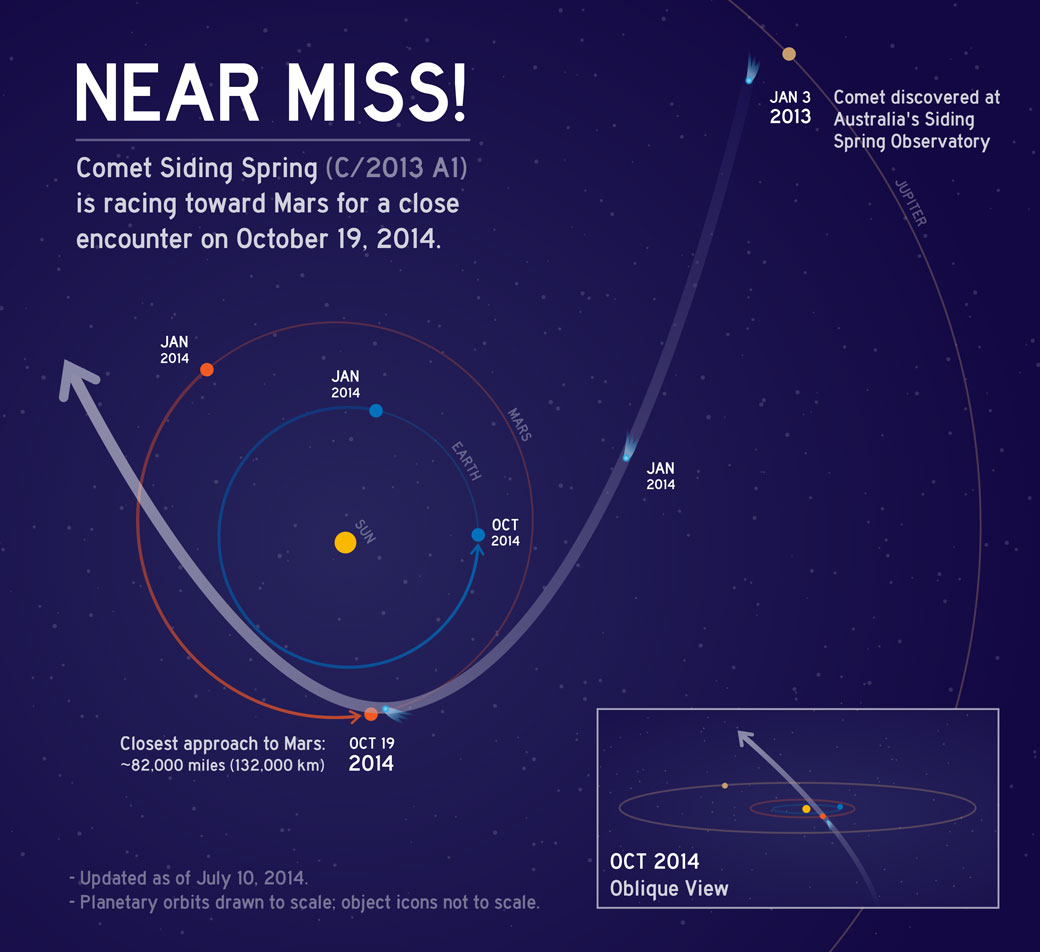TORONTO – Mars will have a close encounter with a comet in October, and NASA is already taking steps to prepare its orbiting spacecraft.

On October 19, Comet C/2013 A1 Siding Spring will pass just 132,000 km from Mars, one of the closest encounters by a comet around another planet ever recorded.
The threat to orbiting spacecraft doesn’t come from the core, or nucleus, of the comet itself, but rather from the debris that it sheds as it nears the sun. The comet will be moving at 56 kilometres per second, meaning an impact from even a small particle could pose a serious threat to the spacecraft.
READ MORE: Hubble spots Mars-bound comet’s jets
“Three expert teams have modeled this comet for NASA and provided forecasts for its flyby of Mars,” said Rich Zurek, chief scientist for the Mars Exploration Program at NASA’s Jet Propulsion Laboratory (JPL). “The hazard is not an impact of the comet nucleus, but the trail of debris coming from it… Mars will be right at the edge of the debris cloud, so it might encounter some of the particles — or it might not.”
NASA has two orbiters around the red planet – the Mars Reconnaissance Orbiter (MRO) and the Mars Odyssey.
On July 2, MRO was repositioned in preparation for the comet’s arrival. Another maneouvre is planned for Aug. 27.
For the Mars Odyssey, its orbiting maneouvre will take place on Aug. 5.
But, the Mars Atmosphere and Volatile Evolution (MAVEN) spacecraft is on its way to the red planet, slated to arrive on Sept. 21. NASA planners have already planned to move MAVEN out of harm’s way on Oct. 9.
Though dangerous to spacecraft, the close flyby of Comet C/2013 A1 Siding Spring presents scientists with a unique opportunity to observe a comet up-close without having to send a dedicated spacecraft.
The comet is making its first journey into our solar system and scientists expect to study its composition closely. All three of the orbiting spacecraft will play a role in its study. MAVEN will study the gases coming off the comet’s nucleus; Odyssey will examine the comet’s coma and tail; MRO will keep a close eye on how the comet interacts with the planet’s upper atmosphere.
The comet was discovered on Jan. 3, 2013, at the Siding Spring Observatory in Australia.





Comments